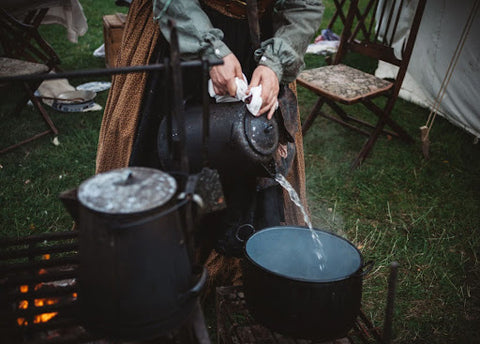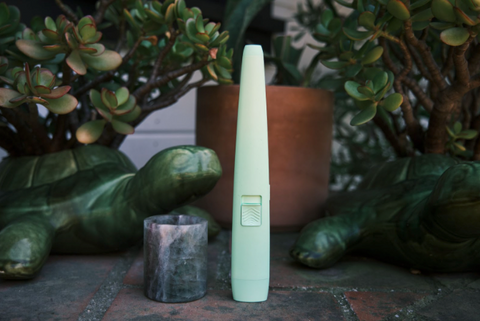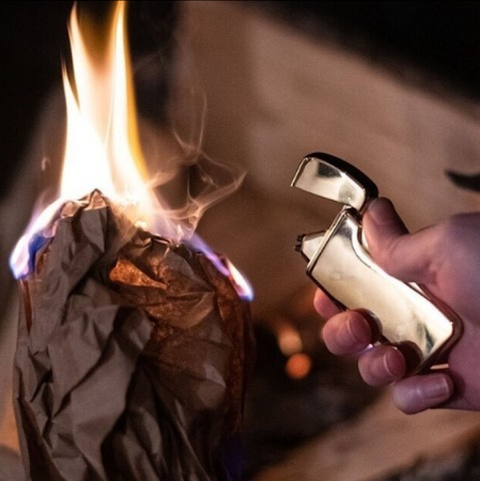
If you're headed out on a camping trip, boiling water is essential for providing drinking water and cooking meals. Boiling water while camping can seem intimidating if you've never done it before, but it's actually quite easy! In this post, we'll explain the steps necessary to successfully boil water while camping so that you can stay hydrated and nourished outdoors. Read on to learn more!
Boil Water While Camping: Why It's Important
If you’ve ever gone camping, you know that there is a certain process to it. One of the most important steps when camping is to boil your water before drinking or cooking with it. Boiling water ensures that any potential contaminants are eliminated and your water is safe to drink.
The Benefits Of Boiling Water
When it comes to ensuring safe drinking water, boiling is one of the best methods available. Boiling water will kill any bacteria, viruses, protozoa, and other organisms that may be present in the water. It also helps remove dirt and other particles. In addition, boiling can reduce levels of lead and other heavy metals found in some tap waters by up to 70%.
Boiling also has its own unique advantages compared to other methods like filtration or chemical treatment. For one thing, it doesn't require any additional equipment; all you need is a pot or pan for boiling your water over a campfire or stovetop. This also requires very little time; simply bring the water to a rolling boil for at least one minute and then let it cool before drinking or using it for cooking.
Another benefit of boiling your water while camping is that it can help improve its taste and smell by removing organic compounds such as chlorine and sulfur. Boiling also helps make cloudy or murky-looking water clear by causing impurities such as dirt and silt particles to settle out of the solution as sediment at the bottom of the pot or pan.
Boiling Water While Camping: A Step-By-Step Guide
Whether you're looking to make coffee, boil eggs, or just stay hydrated, boiling water is an essential part of life outdoors. But how do you go about boiling water? Here's your step-by-step guide to boiling water while camping.
Step 1: Gather Your Supplies:
The first thing you'll need to do is gather the supplies necessary for boiling water. You'll need a pot or kettle and a heat source. If you don't want to use an open flame, you can also use a stove or other portable heating device. Make sure you have enough fuel or gas for your chosen heat source before starting.
Step 2: Fill The Pot With Water:
Next, fill your pot with clean drinking water and set it aside until ready to use. Make sure the pot isn’t too full; leave some room at the top so that when it boils, there won't be any spillage or messes.
Step 3: Build Your Campfire
Now that your pot is filled with water, it's time to build your heat source. If using an open flame, carefully stack your kindling and light it with a match or electric lighter. If using a stove or other heating device, prepare it according to its instructions and add fuel as needed (be sure to let it cool down after use). Keep in mind, a stove might also require a lighter to ignite the flame so make sure to always have one handy.
Step 4: Place The Pot Over The Heat Source:
Once your heat source is ready, place the pot over it on a flat surface such as rocks or a metal grate, and make sure that nothing flammable is near the fire or stove. Now it's time to wait for your water to come to a boil!
Step 5: Bring The Water To A Boil:
It may take several minutes for your water to come up to temperature and begin boiling; be patient and give yourself plenty of time. Once boiling begins, stir occasionally with a spoon so that all of the contents are heated evenly (this also helps prevent spillage). Boil until steam appears from the spout of the pot (this will let you know that all of the contents have been heated through).
Step 6: Allow Water To Cool Before Use:
Once finished boiling, remove it from the heat source and allow time for cooling before attempting to use it for cooking or drinking purposes. Depending on what type of container is used (metal vs plastic), this cooling period can range from 10 minutes up to an hour before being safe for consumption/cooking purposes!
There you have it—all the steps necessary to boil water while camping. Boiling your water will ensure that it is safe to drink and helps reduce any contaminants that may be present in the natural environment. Now go out and enjoy your adventure, knowing that your drinking water is safe!
Get Ready For A Great Camping Trip: What To Pack
Whether you're headed out for a weekend camping trip with friends or an extended family camping getaway, it's important to make sure you have all the right gear and supplies. From tents and sleeping bags to first aid kits and cooking supplies, packing for a camping trip can seem overwhelming at first. Below are some helpful tips on what to pack before you head out on your next camping journey.
Tent & Sleeping Bag Set-Up
The foundation of any successful camping adventure starts with setting up camp. That means having good quality tents and sleeping bags that can keep you safe from the elements. Look for waterproof, lightweight tents that are easy to set up and that come with stakes and guy lines for securing them in windy conditions. When it comes to sleeping bags, down or synthetic insulation is best since they both offer excellent thermal properties. Make sure your sleeping bag is rated appropriately based on where you'll be camping—a warmer climate may require a lighter-weight bag while colder climates will need something more substantial.

Cooking Supplies & Food
No camping trip would be complete without delicious food! Make sure to bring along any cookware and utensils needed depending on how elaborate your meals will be (pots, pans, knives, cutting boards ). Don't forget about propane or charcoal for grilling if that's part of your plan—and don't forget matches or an electric lighter! As far as food goes, go simple but hearty – think canned goods like beans, soups, and tuna packets; quick-cooking grains like quinoa; dried fruits and nuts; peanut butter; pre-chopped veggies; and instant oatmeal. And don't forget snacks like trail mix!
First Aid Kit & Safety Gear
It's always important to be prepared when going into nature so make sure to bring along a well-stocked first aid kit just in case of minor injuries or ailments. Basic items such as bandages, gauze pads, antiseptic wipes/creams/sprays/powders should all be included in addition to any prescription medications needed by campers. Additionally, safety gear such as flashlights (with extra batteries), fire starting tools (matches/lighters), insect repellent (DEET), sunscreen (SPF 30+), and compass/map/GPS device are must-haves for any camping trip—especially if you're venturing off into unfamiliar terrain!
Conclusion
By following these simple steps, you can make sure your drinking water is safe and sanitary for use on all of your future camping trips. Boiling water while camping can be a time-consuming task, but with the right supplies and preparation, it's an essential part of staying healthy outdoors. By boiling your drinking water, you'll also help protect yourself from bacteria or viruses that could potentially be present in the water and cause illness. So make sure to boil your drinking water with the Motli Light by the USB Lighter Company while camping—it's worth it!





